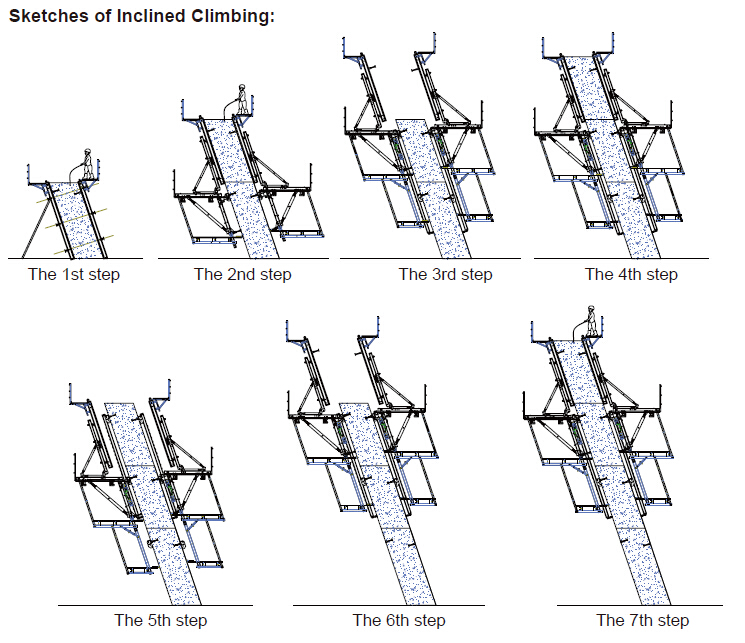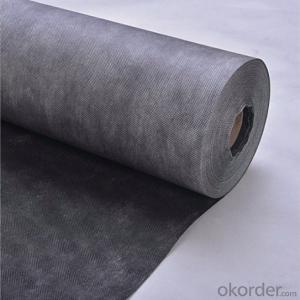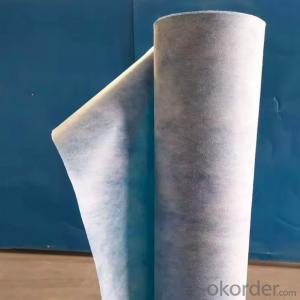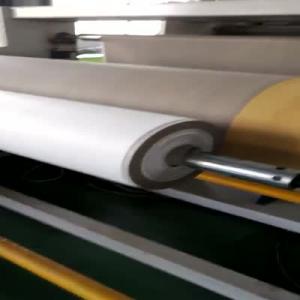Auto-climbing Bracket ACB100 & ACB50 for formwork and scaffolding systems
- Loading Port:
- Tianjin
- Payment Terms:
- TT OR LC
- Min Order Qty:
- 50 m²
- Supply Capability:
- 1000 m²/month
OKorder Service Pledge
OKorder Financial Service
You Might Also Like
Auto-climbing Bracket ACB100 & ACB50
The power of the auto-climbing formwork is the hydraulic system, which includes the oil cylinder
and two commutators. The commutators can control the climbing of climbing rail and the bracket.
The steel rail and the bracket can inter-climbing, so the whole system will climb up steadily.
Cranes are not needed during the construction. It’s easy to operate, highly efficient and safe. It’s
the best choice for the construction of high buildings and bridges.
There are mainly two types of standard auto-climbing brackets, ACB-50 and ACB-100, the figure
means the push power of cylinder with unit of KN.
Characteristics:
◆ Perfect load bearing anchor system
Anchor system is the most important supporting part. The system is made of five parts shown
below. Thereinto, tensile bolt, V-climbing cone and washer can be taken out for reusing after the
concrete pouring finished.There are two kinds of anchor systems,A & B. A is matched with single
anchor shoe and B is matched with double anchor shoe.
◆ Crane-independent
Crane-independent forming, striking and climbing speeds up the work procedures on the
construction site and also makes them independent of each other. This means the planned
sequences can be maintained along with guaranteeing high productivity levels. The crane can
therefore be used for other tasks.
Hydraulic system is mainly made of two commutators,
oil cylinder and power distribution system.The
commutators can control the climbing of climbing rail
and bracket.
◆ High bearing capacity and safe
The stable working platforms are able to carry large loads, e.g. the storage of reinforcing steel
for the next climbing section. Generously-sized working platforms, the well thought-out design for
handling very high wind loads and the patented control function of the climbing mechanism are
some of the special details contained within the comprehensive safety concept.
◆ Platforms adjusted to suit the angle of inclination
The horizontal working areas thus created provide safe and comfortable conditions for
reinforcement work, shuttering and striking, concreting and finishing.
◆ The ACB formwork system can climb not only vertically but also slantways, the largest angle is
18 degrees.
◆ The system can climb up wholly or separately. The climbing process is steady, synchronous
and safe.
◆ The bracket will not fall to the ground until the construction is finished, the field will be saved
and the impacting breakage will be reduced (especially the panel).
◆ The system will furnish omnidirectional platform, the construction organizations don’t need to
set up additional operation platform.
◆ The error of structure construction is small and easy to correct.
◆ The climbing speed is fast, the construction course will be quickened.
◆ The formwork can climb itself and cleaning work can be done in the same situs , the used times
of tower crane will be greatly reduced.

- Q:How does steel formwork affect the overall construction site noise pollution?
- Steel formwork can have a significant impact on reducing overall construction site noise pollution. Compared to traditional wooden formwork, steel formwork offers better acoustic insulation properties. The rigid and dense nature of steel materials helps to absorb and dampen sound waves, minimizing the propagation of noise. This reduced noise propagation can be especially beneficial in densely populated areas or construction sites located near residential or commercial areas. Furthermore, steel formwork is often prefabricated, meaning it is manufactured off-site and then assembled on-site. This process helps to reduce construction noise as it requires fewer on-site activities and reduces the need for cutting, drilling, and hammering, which are major sources of noise pollution. Additionally, the use of steel formwork can lead to faster construction times, resulting in shorter exposure to noise for neighboring communities. Moreover, steel formwork is more durable and long-lasting than wooden formwork, which means it can be reused multiple times. This reusability reduces the need for frequent formwork installation and dismantling, further decreasing noise pollution generated during the construction process. Overall, the use of steel formwork in construction can greatly contribute to minimizing noise pollution at the construction site. Its superior acoustic insulation properties, reduced on-site activities, and longer lifespan all work together to create a quieter and more environmentally friendly construction environment.
- Q:What are the different types of steel alloys used in formwork manufacturing?
- There are several types of steel alloys commonly used in formwork manufacturing, including carbon steel, stainless steel, and high-strength low-alloy (HSLA) steel. Each alloy has its own unique properties and advantages, making them suitable for different applications in formwork construction.
- Q:How does steel formwork affect the overall construction timeline?
- Steel formwork can significantly impact the overall construction timeline by expediting the process. Its durability and reusability allow for faster assembly and dismantling, reducing the time required for formwork installation and removal. Additionally, steel formwork provides a smoother surface finish, minimizing the need for additional plastering or rendering work, further saving time during the construction phase.
- Q:What are the common problems encountered with steel formwork?
- There are several common problems that can be encountered with steel formwork in construction projects. One of the main issues is corrosion. Steel formwork is prone to rust and deterioration when exposed to moisture or harsh environments. This can weaken the structure and compromise its integrity, leading to potential safety hazards. Another problem is the difficulty in handling and transporting steel formwork due to its heavy weight. This can make it challenging to maneuver and assemble on-site, especially in tight spaces or high-rise buildings. The weight of the steel formwork also increases the labor and equipment costs required for installation. In addition, steel formwork may require regular maintenance to prevent damage and ensure its longevity. This includes cleaning, repairing any corrosion or dents, and applying protective coatings to prevent further deterioration. This maintenance can be time-consuming and costly, adding to the overall project expenses. Furthermore, steel formwork may not be suitable for certain construction applications. It is not easily customizable or adjustable compared to other formwork materials, such as timber or plastic. This can limit its flexibility in accommodating unique shapes or designs. Lastly, the cost of steel formwork is generally higher compared to other formwork materials. This can impact the project budget, especially for smaller or budget-constrained construction projects. Overall, while steel formwork offers durability and strength, it is important to be aware of these common problems and take necessary precautions to mitigate them. Regular maintenance, proper handling, and considering alternative formwork materials when appropriate can help address these issues and ensure a successful construction project.
- Q:How does steel formwork affect the overall water tightness of a structure?
- Steel formwork does not directly affect the water tightness of a structure as it is used to create the shape and support the concrete during construction. However, the quality of the concrete and the proper installation of seals, joints, and waterproofing measures are crucial factors determining the overall water tightness of the structure.
- Q:How does steel formwork handle different concrete air content requirements?
- Steel formwork is a durable and versatile construction material that can effectively handle different concrete air content requirements. Concrete air content refers to the amount of air trapped within the concrete mixture, which is crucial for various reasons such as improving workability, durability, and resistance to freezing and thawing cycles. Steel formwork is designed to provide a strong and rigid structure to contain and shape the concrete during the pouring and curing process. Since the formwork is made of steel, it is not permeable, meaning it does not allow air to pass through. This prevents any air from escaping the concrete mixture, ensuring that the desired air content is maintained. To handle different concrete air content requirements, steel formwork can be customized or adjusted accordingly. For instance, if a higher air content is required, the formwork can be designed with additional space or voids to accommodate the desired amount of air within the concrete. On the other hand, if a lower air content is needed, the formwork can be designed to minimize any potential air entrapment by ensuring tight connections and smooth surfaces. Additionally, steel formwork can also be used in conjunction with other techniques to control the air content in concrete. For example, the formwork can be combined with the use of air-entraining admixtures, which are additives that are mixed with the concrete to purposely introduce air bubbles. These admixtures create a more uniform distribution of air throughout the concrete, and the steel formwork helps to retain this air during the pouring and curing process. In summary, steel formwork is well-suited for handling different concrete air content requirements due to its impermeability and customizable nature. It provides a reliable and robust structure to contain the concrete while ensuring that the desired air content is maintained, either by creating additional space for higher air content or by minimizing air entrapment for lower air content. Additionally, it can be used in conjunction with other techniques such as air-entraining admixtures to further control the air content in concrete.
- Q:What are the different sustainability aspects of using steel formwork?
- There are several sustainability aspects associated with the use of steel formwork in construction projects. First and foremost, steel is a highly durable material that can withstand heavy loads and extreme weather conditions. This means that steel formwork can be reused multiple times, reducing the need for frequent replacements and minimizing waste generation. Additionally, steel formwork is resistant to warping, shrinking, and expanding, ensuring consistent and accurate dimensions in the construction process. Another important sustainability aspect of steel formwork is its high strength-to-weight ratio. Compared to other formwork materials, such as wood or plastic, steel is much lighter while still maintaining its structural integrity. This reduces the amount of energy required for transportation and handling, thereby decreasing carbon emissions and fuel consumption. Furthermore, steel is a recyclable material. At the end of its lifespan, steel formwork can be easily dismantled and sent to recycling facilities where it can be melted down and reused to manufacture new steel products. This helps to conserve natural resources and reduce the demand for virgin materials. Moreover, steel formwork offers significant time and cost savings. Its reusability eliminates the need for constant purchases of new formwork materials, reducing construction expenses. Additionally, the ease of assembly and disassembly speeds up the construction process, resulting in shorter project durations and reduced energy consumption. Lastly, steel formwork provides a smooth and uniform surface finish, reducing the need for additional finishing materials such as plaster or paint. This reduces material consumption and waste generation, contributing to a more sustainable construction process. In conclusion, the use of steel formwork in construction projects offers various sustainability benefits, including durability, reusability, recyclability, energy efficiency, cost savings, and reduced material consumption.
- Q:What are the different types of safety systems used with steel formwork?
- Steel formwork commonly utilizes various safety systems to ensure worker safety and prevent accidents on construction sites. Some frequently employed safety systems for steel formwork comprise: 1. Guardrails: These are often positioned along the edges of the formwork to avert workers from slipping or falling. Constructed from steel or aluminum, they possess the capacity to withstand a specific amount of force. 2. Safety harnesses: Workers wear safety harnesses, which are fastened to a secure anchor point to prevent falls. These harnesses are typically adjustable to accommodate different body sizes and are crafted from robust, enduring materials. 3. Toe boards: Positioned at the bottom of the formwork, toe boards prevent the dislodgement of tools, materials, or debris from the structure. Usually made of plywood or steel, these boards are firmly affixed to the formwork. 4. Safety nets: Installed beneath the formwork, safety nets are capable of catching falling objects or workers in the event of an accident. Comprised of sturdy, flexible materials, they possess the ability to absorb the impact of a fall. 5. Ladders and stairs: Employed to facilitate secure access to and from the formwork, ladders and stairs are typically constructed from steel or aluminum, ensuring stability and durability. 6. Warning signs and barricades: Warning signs and barricades operate as cautionary measures, alerting workers and visitors to potential hazards and restricted areas. These items are usually manufactured using durable materials and are brightly colored for enhanced visibility. 7. Personal protective equipment (PPE): PPE, including hard hats, safety glasses, and steel-toed boots, is a vital safety system employed in conjunction with steel formwork. These protective measures are designed to safeguard workers against head injuries, eye injuries, and foot injuries. It is important to acknowledge that the selection of specific safety systems for steel formwork may vary depending on project requirements and regulations. Construction companies and workers must meticulously adhere to all safety guidelines and regulations to establish a secure working environment.
- Q:How does steel formwork compare to other types of formwork in terms of durability?
- Steel formwork is known for its exceptional durability compared to other types of formwork. Unlike wooden or plastic formwork, steel formwork is built to withstand heavy loads and repetitive use, making it ideal for projects that require long-term usability. Steel formwork is not affected by weather conditions, moisture, or decay, making it highly resistant to damage and deterioration. It can withstand extreme temperatures, strong winds, and heavy rains without compromising its structural integrity. This durability ensures that steel formwork can be used in various construction projects, including high-rise buildings, bridges, and tunnels, where strength and reliability are crucial. Another advantage of steel formwork is its ability to bear high concrete pressures. The robustness of steel allows it to handle the pressure exerted by wet concrete during the pouring and curing process. This makes steel formwork highly suitable for projects that involve pouring large volumes of concrete, ensuring that the formwork remains intact and can be reused multiple times. Furthermore, steel formwork has a longer lifespan compared to other materials. Due to its durability, it can be used for multiple construction cycles, reducing the need for frequent replacements. This not only saves time and money but also minimizes waste generated during construction. In summary, steel formwork surpasses other types of formwork in terms of durability. Its resistance to weather conditions, high concrete pressures, and long lifespan make it a reliable choice for construction projects that require a strong and long-lasting formwork system.
- Q:Can steel formwork be used for both small and large-scale construction projects?
- Yes, steel formwork can be used for both small and large-scale construction projects. Steel formwork offers several advantages such as durability, reusability, and flexibility. It can withstand high pressure and loads, making it suitable for large-scale projects that require heavy concrete pouring. Additionally, steel formwork's modular nature allows for easy customization and adaptation to different project sizes and designs. This makes it equally suitable for smaller construction projects, where a quick and efficient formwork system is required. Steel formwork also provides a smooth and high-quality finish to concrete structures, ensuring a consistent appearance regardless of the project scale. Overall, steel formwork is a versatile and reliable choice for both small and large-scale construction projects.
1. Manufacturer Overview |
|
|---|---|
| Location | |
| Year Established | |
| Annual Output Value | |
| Main Markets | |
| Company Certifications | |
2. Manufacturer Certificates |
|
|---|---|
| a) Certification Name | |
| Range | |
| Reference | |
| Validity Period | |
3. Manufacturer Capability |
|
|---|---|
| a)Trade Capacity | |
| Nearest Port | |
| Export Percentage | |
| No.of Employees in Trade Department | |
| Language Spoken: | |
| b)Factory Information | |
| Factory Size: | |
| No. of Production Lines | |
| Contract Manufacturing | |
| Product Price Range | |
Send your message to us
Auto-climbing Bracket ACB100 & ACB50 for formwork and scaffolding systems
- Loading Port:
- Tianjin
- Payment Terms:
- TT OR LC
- Min Order Qty:
- 50 m²
- Supply Capability:
- 1000 m²/month
OKorder Service Pledge
OKorder Financial Service
Similar products
New products
Hot products
Hot Searches

























